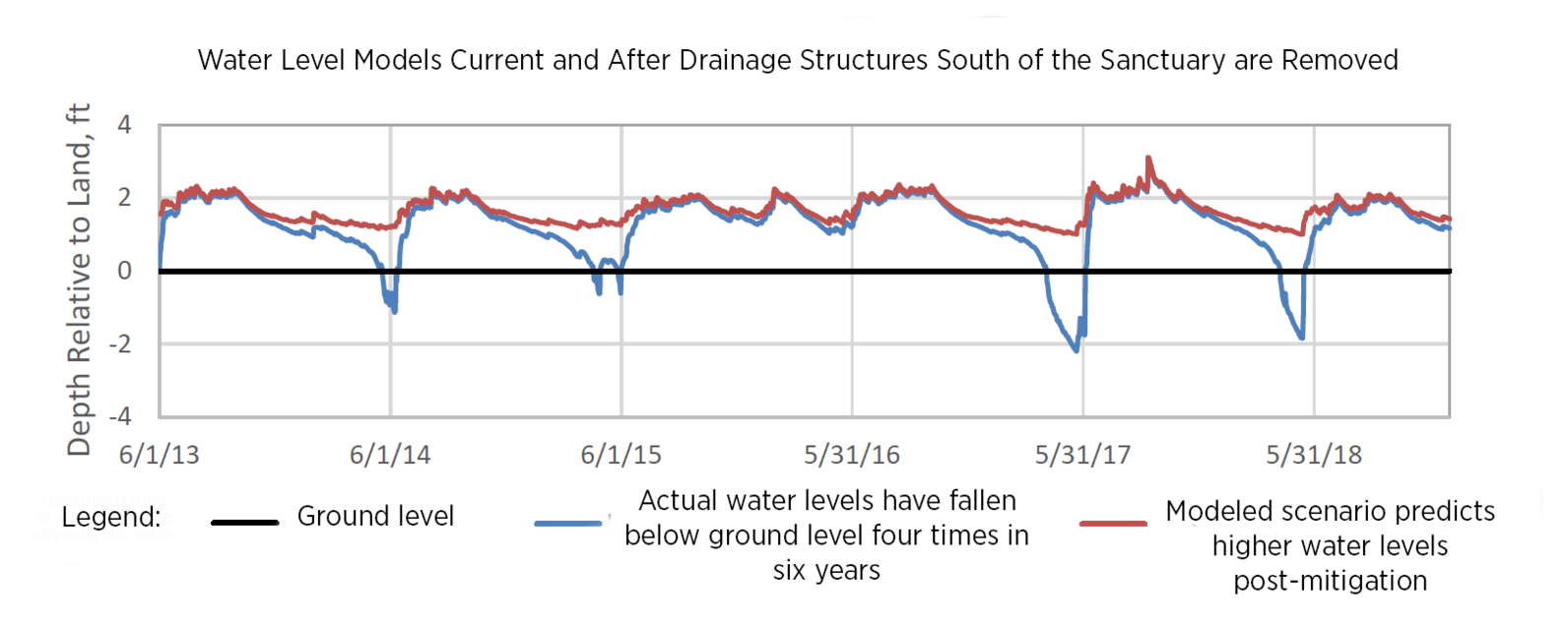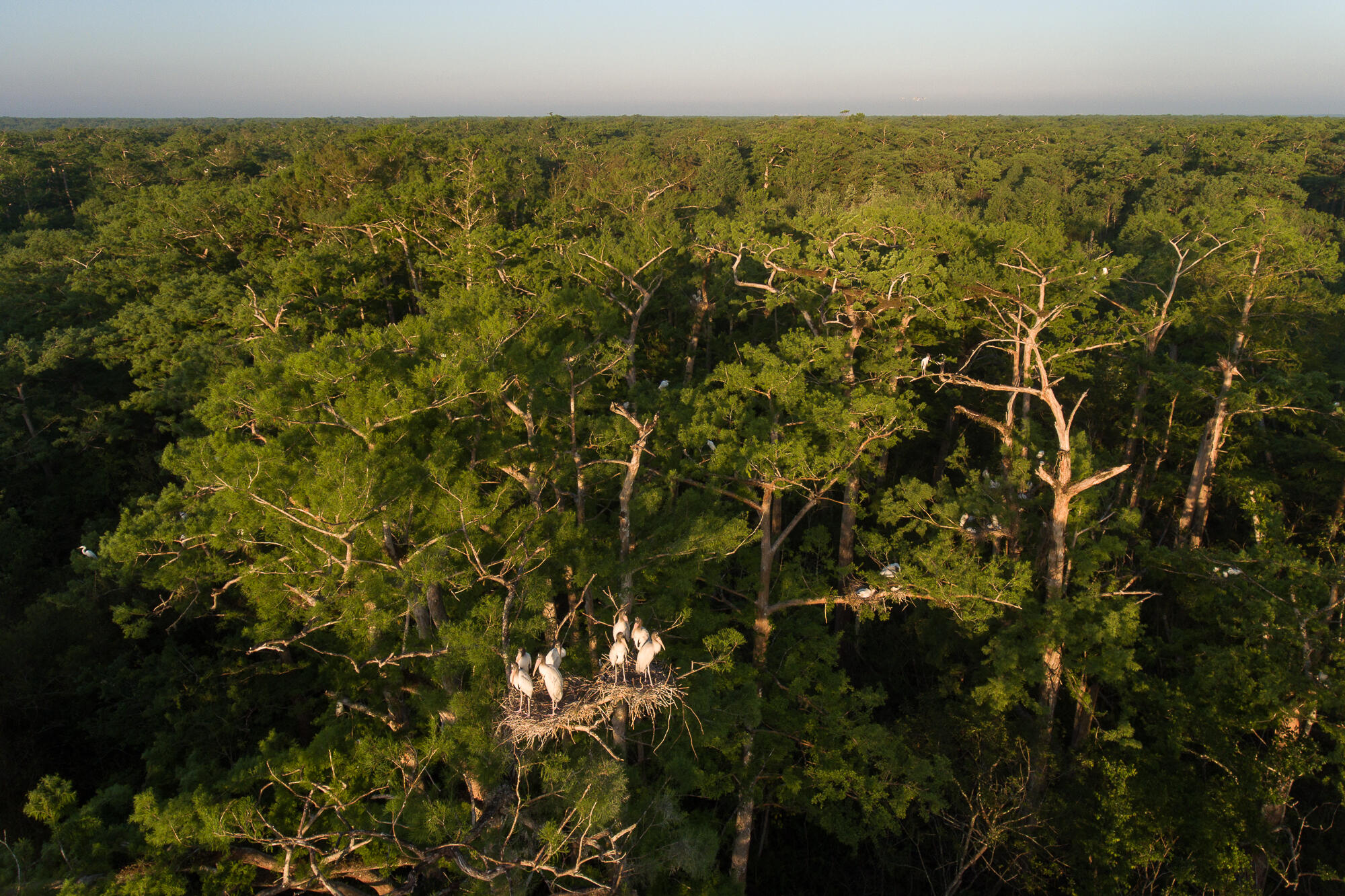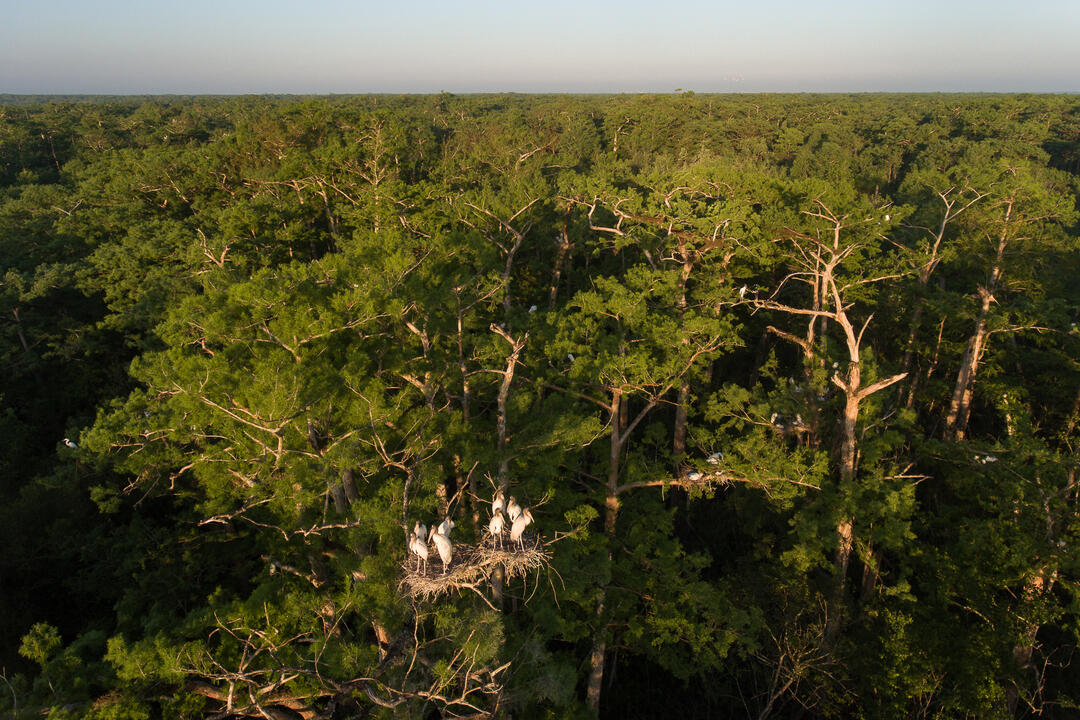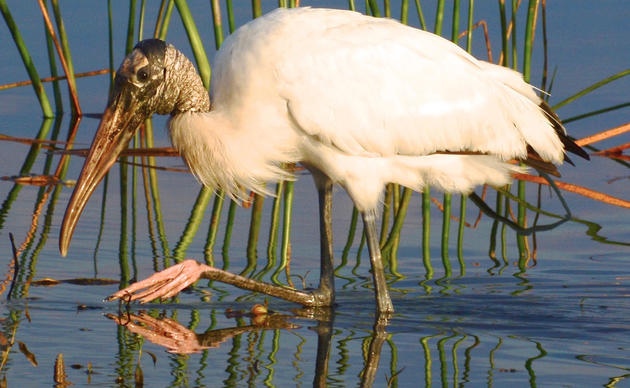Background
In 1954, concerned citizens rallied together to protect the old-growth cypress forests of Corkscrew Swamp from logging. These trees, now over 500 years old, supported the renowned Corkscrew Wood Stork colony that seasonally hosted tens of thousands of nests. The Corkscrew colony now lies within Audubon’s Corkscrew Swamp Sanctuary, a mosaic of wetland and upland habitats that support many wildlife species.
These wetlands also provide irreplaceable benefits to surrounding communities by recharging the aquifer, storing excess surface water, reducing the threat of catastrophic wildfires, and filtering freshwater before it flows into estuaries. The protections afforded by land ownership, however, do not extend beyond the Sanctuary’s border. Threats to Corkscrew Swamp Sanctuary’s wetlands, and also to the Corkscrew Swamp region surrounding the Sanctuary, have been intensifying over the past few decades.
The Problem
Historically, the Sanctuary’s wetlands held water throughout the entire winter “dry” season. In the mid-2000s, the staff at the Sanctuary started noticing substantial changes to water levels in the swamp. Monitoring efforts showed that the wetlands were drying out faster, with water levels remaining lower for longer intervals, despite no change in rainfall patterns.
In Southwest Florida’s flat landscape, water normally moves slowly through swamps like Corkscrew. But canals operated to drain water during rainfall events from low-lying communities downstream have also had the effect of pulling water faster out of this increasingly vulnerable wetland of international significance. The length of time that these wetlands remain filled with water has a direct impact on plants and animals in this water-driven ecosystem. Wood Storks, for example, depend on having an abundant food source throughout the nesting season (December through May).
High water levels throughout the summer/fall rainy season allow fish populations to grow, and falling water levels in the winter and spring concentrate those fish in depressions where wading birds readily feed on them. Disruptions in this cycle reduce food availability for fast-growing Wood Stork chicks.
Audubon scientists believe the combination of regional wetland loss, on the order of tens of thousands of acres over the last 25 years, and drainage of many remaining wetlands, including those near the Sanctuary, has led to the near-collapse of the nesting colony that historically relied on Corkscrew Swamp. This prompted an investigation into the potential causes of these water level changes. A solution to reverse the water-loss trend would not only help Wood Storks, but the greater Everglades ecosystem, as well.
It is important to note that regional water impacts during the dry season also significantly increase human community threats as well. These include significant increases of catastrophic wildfire risk in Golden Gate Estates and similar semi-rural communities, degradation of water supply and quality, and increases in harmful algal blooms like red tide and cyanobacteria.
The Research
In early 2020, with support from the South Florida Water Management District's Big Cypress Basin, Audubon contracted Water Science Associates (led by Roger Copp and W. Kirk Martin) to complete a hydrologic modeling study aimed at better understanding the causes of the over-drying of Corkscrew Swamp Sanctuary. The modeling team compared the relative impact of three stressors: water use (from agriculture and well fields), an influx of woody vegetation, and drainage for flood control, i.e. canals that drain surface waters downstream of the Sanctuary.
The Findings
While agricultural and public water supply withdrawals have some negative impacts on the Sanctuary, flood management structures and operations downstream are more directly responsible for water loss.

Complete elimination of downstream drainage is not feasible due to residential and commercial development; therefore, the study examined potential engineering and operations changes that could help protect the Sanctuary’s natural resources while continuing to provide necessary flood control for our neighbors. The model demonstrated that improved engineering could provide some water level restoration for the Sanctuary, but more work is necessary to create a more effective solution.
Conclusion
The Corkscrew Swamp Sanctuary Hydrologic Model is a very powerful new tool. This tool can provide the information Audubon needs to diagnose the causes of a twenty-year decline in water levels and all the harm attenuating that decline, and also illuminates the regional nature of watershed hydrologic impacts and solutions. That regional nature requires Audubon to work collaboratively with the Big Cypress Basin, the South Florida Water Management District, local governments, and all Audubon’s landowning neighbors in order to solve these grave challenges for everyone’s mutual benefit.
Upon presentation of these findings to the Big Cypress Basin Board of Directors, Chair Roman concurred that the Sanctuary is a gem of Collier County and instructed her team and Basin staff to closely review the study and return with steps forward. Find the recording of that meeting and presentation here.
Audubon Policy Recommendations
- Audubon needs more data, including topographic information and more data on water level monitoring wells, to model additional solutions to return the Sanctuary to 1970’s water levels.
- Policy staff will pursue regulatory fixes to both ERP and the 404 programs.
- Working with partners, land acquisition and restoration of wetlands will reduce future water needs and provide more land in which to implement possible water solutions.
- Buying out flood-prone properties to allow these areas to return to wetlands for part or all of the year.
- Retrofitting farm water management systems to fix impacts downstream.
How You Can Help
- Join Audubon Florida and Friends of Corkscrew. People can make a huge difference in water sustainability.
- Voice your support in as many forums as possible for fixing the water quality/red tide problem, including support for protecting wetlands and watersheds like CREW.
- Support conservation land acquisition, restoration (i.e. the Everglades!), and keeping development out of flood plains.
- Hold more water in your yard, neighborhood, or town. Examples: use rain gardens, pervious surfaces, low-impact development designs, stormwater rule improvement, systems retrofitted to clean and hold surface waters such as Stormwater Treatment Areas, and restored wetlands like those in CREW headwaters.
- Loudly support science and data – it’s how we all know what is the problem, solve it, and ultimately make progress.
Contacts
Shawn Clem, PhD
Corkscrew Swamp Sanctuary Director of Research
shawn.clem@audubon.org
Brad Cornell
Big Cypress Ecosystem Policy Associate
bradley.cornell@audubon.org
Related Links
Naples Daily News: Collier commissioners agree to look into Corkscrew Swamp Sanctuary water woes
Naples Daily News: Water loss at Corkscrew Swamp Sanctuary has put wildlife at risk. New research points to the problem
WINK (CBS) News: A major Southwest Florida wetland is drying up as people move in
How you can help, right now
Donate to Protect Corkscrew's Birds and Wetlands
Make a meaningful and lasting gift to protect Corkscrew Swamp Sanctuary's rare Everglades habitat.
Become a Member
Join an extraordinary and growing community of members dedicated to supporting the conservation of natural ecosystems throughout the Western Everglades.
Sign Up for the Corkscrew eNewsletter
Stay connected to Corkscrew Swamp. Sign up for our monthly online newsletter.






